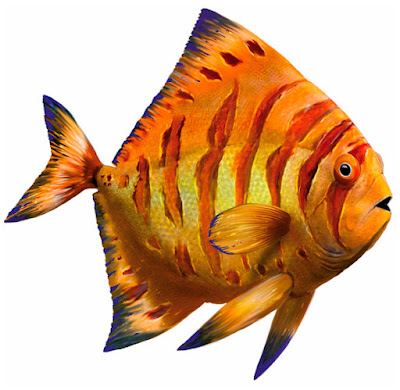 |
| Ypsiloichthys sibelleae El Hossny & Cavin, 2023 Artwork by Alain Bénéteau. |
Abstract
Teleosts form the largest clade among the extant actinopterygians, some extinct forms of which are still poorly positioned in the phylogeny. The Tselfatiiformes and Araripichthyidae are such examples. A newly discovered genus and species from the Cenomanian of Haqel, Lebanon, is described, and its systematic affinities are discussed. It shares several characteristics (deep and compressed body with elongated and high dorsal and anal fins, edentulous maxilla, and sinusoidal vertebral column) with both the Tselfatiiformes and Araripichthys, making it difficult to place within the teleosts. It shares with Abisaadichthys, among the tselfatiiforms’ family Protobramidae, an autogenous retroarticular, and with Araripichthys premaxillae with a long ascending process, well-developed maxillary articular condyle and two supramaxillae. Moreover, it shows some unique characteristics (a thin maxilla with two large supramaxillae, fused articular and angular bones, mandibular sensory canal opening on the external side of the anguloarticular, first dorsal pterygiophore having the same enlarged semi-circular plate as the first anal pterygiophore) justifying its generic status. Comments on some of the protobramids are presented, and the necessity for phylogenetic analysis to place the Tselfatiiformes, Araripichthys and Ypsiloichthys within the teleosts is outlined.
Keywords: Teleostei; Tselfatiiformes; Araripichthys; Lebanon; mid-Cretaceous; Ypsiloichthys sibelleae
 |
| Ypsiloichthys sibelleae gen. et sp. nov., holotype MHNG GEPI V5786, (A) original specimen; (B) interpretive line drawing of (A). Scale bar: 2 cm. |
Systematic Paleontology
Teleostei Müller, 1845
Incertae sedis
Ypsiloichthys gen. nov.
Ypsiloichthys sibelleae gen. et sp. nov.
Holotype. MHNG GEPI V5786 (Figure 1, Figure 2 and Figure 3) is a single and almost complete specimen preserved in a lateral view, lacking some skull roof and caudal elements.
Diagnosis. moderate-sized deep bodied teleost fish characterized by: high dorsal and anal fins; forked caudal fin; cycloid scales covering the entire body and the bases of the dorsal, anal and caudal fins; supraorbitals absent; edentulous jaws; well-developed ascending process of premaxilla; thin maxilla with a well-developed articular condyle; two large supramaxillae, the posterior one with a process extending along the dorsal margin of the anterior one; entry of the mandibular sensory canal on the external side of angular; fused articular and angular; retroarticular excluded from joint facet of the quadrate; hyomandibula with long opercular process; subopercle with a triradiate ridge pattern on its posteroventral corner; pectoral girdle and fins inserted low on the flank; presence of pelvic girdle and fins in connection with the pectoral girdle in thoracic position; wing-like anterior extensions of the few first haemal spines; large semi-circular first dorsal and anal pterygiophores; neural and haemal arches articulated with the centra; presence of supraneurals and epineurals; two ural centra; two uroneurals; five hypurals; ‘Z’ or step-like segmented caudal fin rays.
Locality and Horizon. The material studied here consists of a single specimen (Figure 1) preserved in the right lateral view, originating from the limestones of Haqel, Lebanon, which belong to the lowermost horizon of the upper Cenomanian of the Sannine Formation.
Etymology. The generic name is derived from the Greek “ypsilos” for deep and “ichthys” for fish, with respect to its high and deep dorsal and anal fins. The species epithet “sibelleae” is named after Sibelle Maksoud, who is currently working on a detailed study of the site from where this fish originates.
Tamara El Hossny and Lionel Cavin. 2023. A New Enigmatic Teleost Fish from the Mid-Cretaceous of Lebanon. Diversity. 15(7); 839. DOI: 10.3390/d15070839

